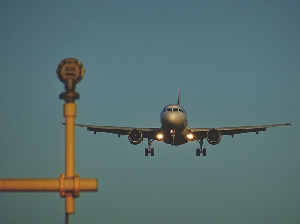Business News of Sunday, 16 January 2022
Source: iata.org
Passenger traffic improved in November, but headwinds still remain – IATA
The International Air Transport Association (IATA) has announced that the recovery in air travel continued in November 2021, prior to the emergence of Omicron.
International demand sustained its steady upward trend as more markets reopened. Domestic traffic, however, weakened, largely owing to strengthened travel restrictions in China.
Total demand for air travel in November 2021 was down 47.0% compared to November 2019. This marked an uptick compared to October’s 48.9% contraction from October 2019.
Domestic air travel deteriorated slightly in November after two consecutive monthly improvements. Domestic RPKs fell by 24.9% versus 2019 compared with a 21.3% decline in October. Primarily this was driven by China, where traffic fell 50.9% compared to 2019, after several cities introduced stricter travel restrictions to contain (pre-Omicron) COVID outbreaks.
International passenger demand in November was 60.5% below November 2019, bettering the 64.8% decline recorded in October.
“The recovery in air traffic continued in November. Unfortunately, governments over-reacted to the emergence of the Omicron variant at the close of the month and resorted to the tried-and-failed methods of border closures, excessive testing of travelers and quarantine to slow the spread. Not surprisingly, international ticket sales made in December and early January fell sharply compared to 2019, suggesting a more difficult first quarter than had been expected.
If the experience of the last 22 months has shown anything, it is that there is little to no correlation between the introduction of travel restrictions and preventing transmission of the virus across borders. And these measures place a heavy burden on lives and livelihoods. If experience is the best teacher, let us hope that governments pay more attention as we begin the New Year,” Willie Walsh, IATA’s Director-General noted.
European carriers’ November international traffic declined 43.7% versus November 2019, much improved compared to the 49.4%% decrease in October versus the same month in 2019. Capacity dropped 36.3% and load factor fell 9.7 percentage points to 74.3%.
Asia-Pacific airlines saw their November international traffic fall 89.5% compared to November 2019, slightly improved from the 92.0% drop registered in October 2021 versus October 2019. Capacity dropped 80.0% and the load factor was down 37.8 percentage points to 42.2%, the lowest among regions.
Middle Eastern airlines had a 54.4% demand drop in November compared to November 2019, well up compared to the 60.9% decrease in October, versus the same month in 2019. Capacity declined 45.5%, and load factor slipped 11.9 percentage points to 61.3%.
North American carriers experienced a 44.8% traffic drop in November versus the 2019 period, significantly improved over the 56.7% decline in October compared to October 2019. Capacity dropped 35.6%, and load factor fell 11.6 percentage points to 69.6%.
Latin American airlines saw a 47.2% drop in November traffic, compared to the same month in 2019, a marked upturn over the 54.6% decline in October compared to October 2019. November capacity fell 46.6% and load factor dropped 0.9 percentage points to 81.3%, which was the highest load factor among the regions for the 14th consecutive month.
African airlines’ traffic fell 56.8% in November versus two years’ ago, improved over the 59.8% decline in October compared to October 2019. November capacity was down 49.6% and load factor declined 10.1 percentage points to 60.3%.
Opinions










